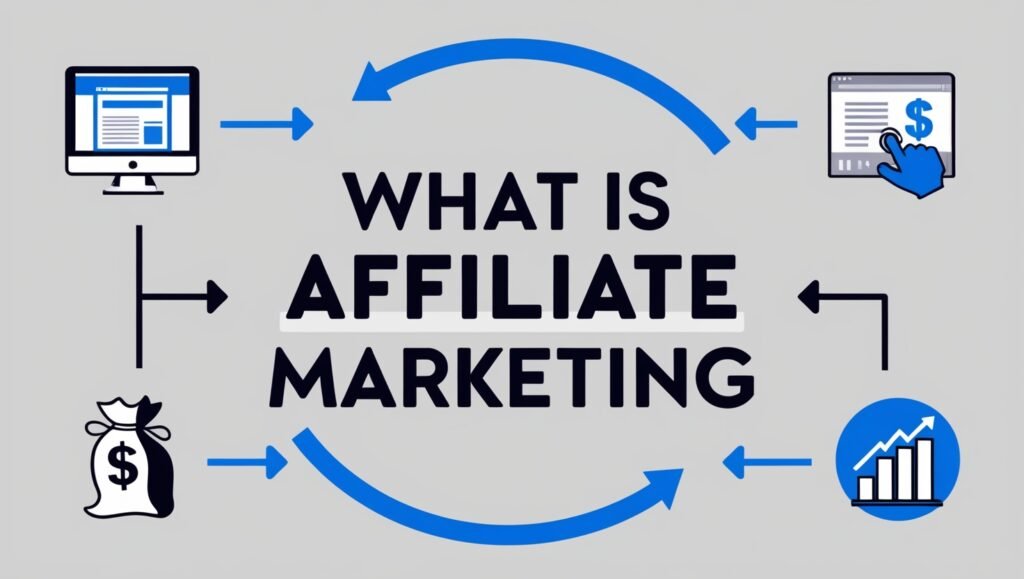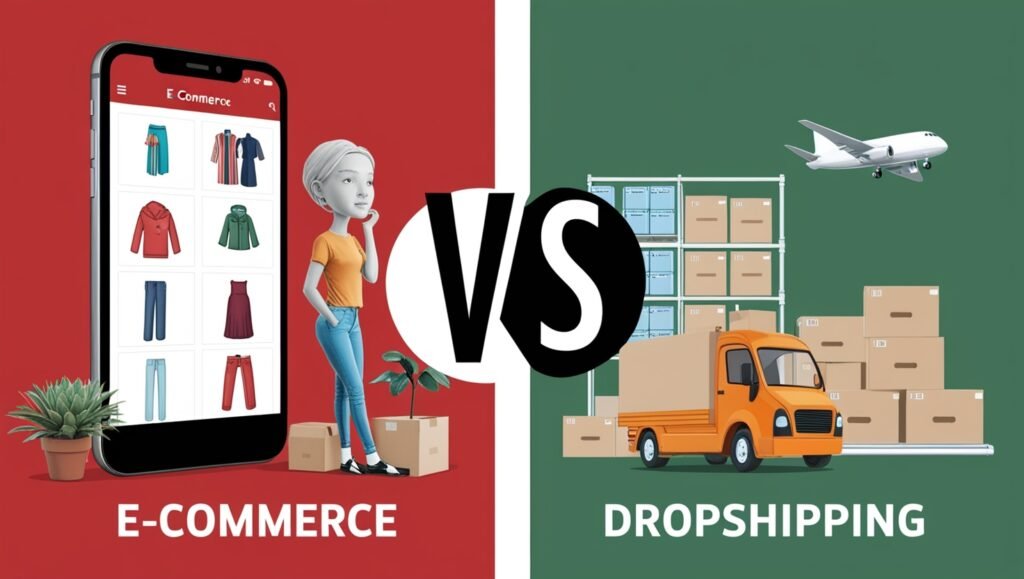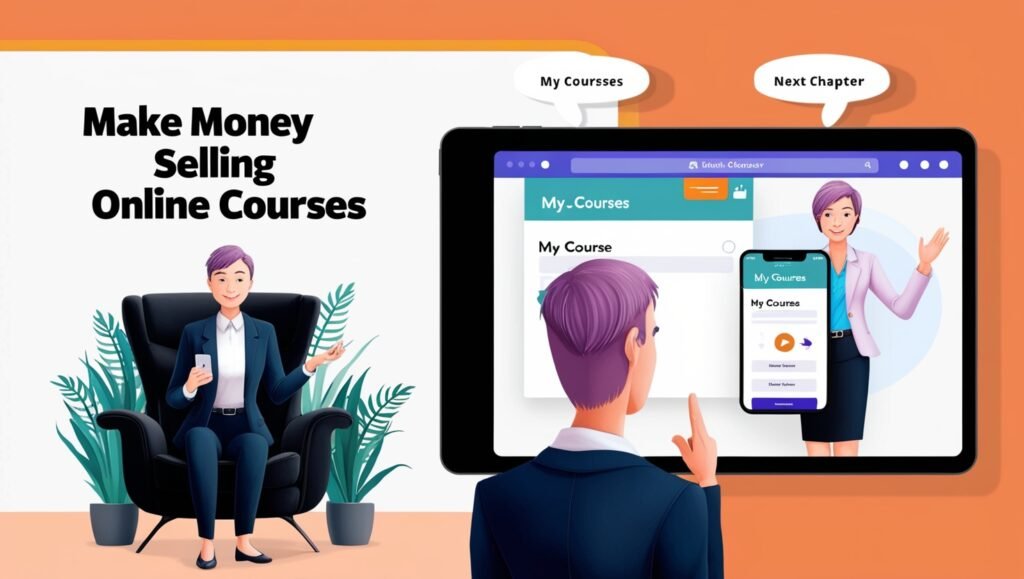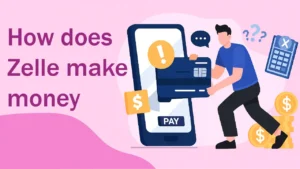
Introduction to Online Earning
In today’s world, making money online is more accessible than ever. You can turn your skills or interests into income from the comfort of your home. Whether you want to freelance, sell products, or create content, there are plenty of options for you. This article will guide you through various ways to earn money online and best brand on social media. You’ll discover practical steps to start your journey and tips to succeed. If you’re ready to explore new opportunities and boost your income, keep reading!
Freelancing Opportunities
Freelancing is a great way to make money online. It allows you to use your skills and work on your own terms. Many people, including you, have turned their talents into a steady income through freelancing. Let’s explore how you can get started and find success.
What is Freelancing?
Freelancing means working for yourself instead of a company. You offer your skills to clients who need help with specific tasks. This could be writing, graphic design, web development, or even marketing. You set your own rates and choose the projects you want to work on.
Finding Freelance Work
To begin freelancing, you need to find clients. Websites like Upwork, Fiverr, and Freelancer are excellent places to start. You can create a profile that showcases your skills and previous work. Make sure to write a clear and engaging description of what you offer. This helps potential clients see why you’re the right person for their project.
Building Your Portfolio
Having a strong portfolio is important. Your portfolio shows examples of your work and highlights your best projects. If you’re just starting, you can create sample projects or offer your services for free or at a lower rate to build your portfolio. As you complete more jobs, your portfolio will grow, making it easier to attract new clients.
Setting Your Rates
When you start freelancing, you may wonder how much to charge. It’s essential to research what others in your field are charging. You can set your rates based on your experience, skills, and the complexity of the work. As you gain more experience and positive reviews, you can gradually increase your prices.
Managing Your Time
Freelancing gives you flexibility, but it also requires good time management. You should create a schedule that works for you. Set deadlines for your projects and stick to them. This helps you stay organised and ensures you meet your clients’ expectations.
Conclusion
offers you the chance to earn money using your skills. With the right approach, you can find clients, build a strong portfolio, and set fair rates. If you’re ready to take control of your work life and explore this opportunity, freelancing may be the perfect path for you.
Affiliate Marketing Explained

Affiliate marketing is an exciting way to earn money online by promoting other people’s products. It’s simple: you share links to products, and when someone buys through your link, you earn a commission. Let’s dive into how affiliate marketing works and how you can get started.
What is Affiliate Marketing?
Affiliate marketing involves partnering with companies to promote their products. You don’t need to create or manage any products yourself. Instead, you choose products that interest you and share them with your audience. When someone clicks your link and makes a purchase, you receive a percentage of the sale.
Choosing a Niche
To succeed in affiliate marketing, you should choose a niche that interests you. This could be anything from fitness to tech gadgets. Focusing on a specific area makes it easier to target your audience and find products to promote. You want to attract people who are genuinely interested in what you share.
Finding Affiliate Programs
Once you have your niche, the next step is to find affiliate programs. Many companies offer affiliate programs, including Amazon, eBay, and ShareASale. You can sign up for these programs and get unique links to share. Some programs offer resources, like banners and marketing materials, to help you promote their products.
Creating Quality Content
To attract an audience, you need to create quality content. This could be blog posts, social media updates, or videos. Share helpful information about the products you promote. For example, if you’re promoting fitness equipment, you could write a review or create a workout tutorial. Your content should provide value and build trust with your audience.
Promoting Your Links
After creating content, it’s time to promote your affiliate links. You can share them on your blog, social media platforms, or even in email newsletters. Be honest and transparent with your audience about your affiliate relationships. Let them know that you earn a commission if they make a purchase through your links. This builds trust and encourages them to support you.
Tracking Your Progress
Monitoring your affiliate marketing efforts is crucial. Most affiliate programs provide tools to track clicks and sales. Use this data to see which products perform well and adjust your strategy. You can focus on promoting the products that earn you the most commissions.
fantastic way for you to earn money online. By choosing a niche, finding the right programs, and creating valuable content, you can build a successful affiliate marketing business. If you’re ready to explore this opportunity, start today and watch your earnings grow!
Creating and Selling Online Courses

Creating and selling online courses is a rewarding way to share your knowledge and make money. If you have expertise in a particular area, you can teach others and earn income from your courses. Let’s explore how you can get started and succeed in this growing field.
Why Create an Online Course?
Online courses offer flexibility for both you and your students. You can create a course on any topic you are passionate about, from cooking to coding. This allows you to connect with learners who are eager to gain new skills. Additionally, once you create a course, it can generate income over time with minimal ongoing effort.
Choosing Your Course Topic
The first step in creating a course is to choose a topic. Think about your skills, experiences, and what you enjoy teaching. You can also research trends and see what subjects are popular. Make sure your topic is something that potential students are interested in and willing to pay for.
Structuring Your Course
Once you have a topic, outline the structure of your course. Break it down into modules or lessons that cover specific aspects of the subject. Each lesson should have clear objectives and takeaways. Consider including a mix of videos, text, and quizzes to keep your students engaged. A well-organised course makes it easier for learners to follow along and absorb the material.
Creating Course Content
After structuring your course, it’s time to create the content. Invest in good recording equipment to ensure your videos are clear and professional. Use simple language and explain concepts clearly. You can also include downloadable resources, such as worksheets or guides, to enhance the learning experience. Remember, the more valuable your content, the more likely students will recommend your course to others.
Choosing a Platform
Next, decide where to host your course. There are several platforms available, such as Udemy, Teachable, and Thinkific. Each platform has its own features, pricing, and audience. Choose one that fits your needs and makes it easy for you to upload your content and manage your students.
Marketing Your Course
Once your course is ready, you need to promote it. Use social media, email marketing, and blogging to reach your target audience. Share snippets of your course content to generate interest. You can also offer early-bird discounts or free introductory lessons to encourage sign-ups. Building an email list is also a great way to keep potential students informed about your course.
Engaging with Your Students
Engagement is key to the success of your online course. Interact with your students through forums, Q&A sessions, or live webinars. Encourage them to ask questions and provide feedback. This not only enhances their learning experience but also helps you improve your course in the future.
Creating and selling online courses is an excellent way for you to share your knowledge and generate income. By choosing a relevant topic, structuring your course effectively, and marketing it well, you can build a successful online education business. If you’re ready to turn your expertise into a course, start planning today and watch your impact grow!
Starting a Blog or Vlog

Starting a blog or vlog is a fantastic way to express your ideas, share your passions, and make money online. Both platforms allow you to connect with an audience and can lead to various income opportunities. Let’s explore how you can start your own blog or vlog and turn it into a successful venture.
What is a Blog or Vlog?
A blog is a website where you write articles about topics that interest you. A vlog, short for video blog, involves creating and sharing videos on platforms like YouTube. Both formats allow you to share your knowledge, experiences, and creativity with others. You can choose one or combine both to reach a wider audience.
Choosing Your Niche
Before you start, think about what topics you are passionate about. Your niche should be something you enjoy and know a lot about. This could be anything from travel and cooking to technology and fashion. Choosing a specific niche helps you attract a dedicated audience who shares your interests.
Setting Up Your Blog or Vlog
To start a blog, you’ll need a domain name and hosting. Platforms like WordPress or Wix make it easy to create a blog without needing technical skills. For a vlog, you can create a YouTube channel for free. Choose a catchy name that reflects your content and is easy to remember.
Creating Quality Content
Whether you’re blogging or vlogging, content is key. Focus on providing value to your audience. Write engaging articles or create interesting videos that educate, entertain, or inspire. Use simple language, visuals, and personal stories to connect with your viewers or readers. Consistency is also important—aim to publish regularly to keep your audience engaged.
Building an Audience
Growing your audience takes time and effort. Promote your blog or vlog on social media platforms like Instagram, Facebook, and Twitter. Engage with your followers by responding to comments and asking for feedback. Collaborate with other bloggers or vloggers to reach new audiences and share your content.
Monetizing Your Blog or Vlog
Once you have an audience, you can start making money. There are several ways to monetize your blog or vlog:
1. Advertising: Use platforms like Google AdSense to display ads on your site or videos. You earn money based on clicks or views.
2. Affiliate Marketing: Promote products related to your content. Include affiliate links in your blog posts or video descriptions to earn commissions on sales.
3. Sponsored Content: Partner with brands to create sponsored posts or videos. Brands pay you to feature their products or services.
4. Selling Products or Services: You can sell your own products, like e-books or merchandise, or offer services, like coaching or consulting.
5. Memberships and Donations: Consider setting up a Patreon or similar platform where loyal followers can support you directly.
Analysing Your Performance
Use analytics tools to track your blog or vlog performance. Platforms like Google Analytics for blogs and YouTube Analytics for vlogs can provide insights into your audience, views, and engagement. This data helps you understand what works and allows you to improve your content strategy.
Starting a blog or vlog is a rewarding way to share your passions and make money online. By choosing a niche, creating quality content, and building an audience, you can turn your platform into a successful venture. If you’re ready to express yourself and connect with others, start your blogging or vlogging journey today!
E-commerce and Dropshipping

E-commerce is a popular way to make money online, and dropshipping is one of the easiest ways to get started. It allows you to sell products without holding any inventory. Let’s explore how e-commerce works, the benefits of dropshipping, and how you can set up your own online store.
What is E-commerce?
E-commerce refers to buying and selling products or services over the internet. It can involve various business models, including selling physical products, digital goods, or services. With the growth of online shopping, e-commerce presents a huge opportunity for anyone looking to earn money online.
Understanding Dropshipping
Dropshipping is a retail fulfilment method where you don’t keep products in stock. Instead, when you sell a product, you purchase it from a third party (usually a wholesaler or manufacturer) who then ships it directly to the customer. This means you don’t have to worry about inventory, storage, or shipping costs.
Choosing a Niche
To succeed in e-commerce and dropshipping, you need to choose a niche. This is a specific area or category of products that you want to sell. Think about what interests you and what people are searching for. Popular niches include health and wellness, fashion, gadgets, and home decor. Research trends and find products that have a good demand but not too much competition.
Finding Suppliers
Once you have your niche, you need to find reliable suppliers. There are various platforms, like AliExpress, Oberlo, and SaleHoo, where you can connect with suppliers who offer dropshipping services. Look for suppliers with good reviews, quality products, and fast shipping times. Establish a good relationship with your suppliers to ensure smooth transactions.
Setting Up Your Online Store
Next, you’ll need to set up your online store. You can use platforms like Shopify, WooCommerce, or BigCommerce to create your store easily. Choose a professional design that reflects your brand. Make sure your website is user-friendly and mobile-responsive. Add high-quality images and detailed descriptions of your products to attract customers.
Marketing Your Store
Once your store is set up, it’s time to promote it. Use social media platforms like Instagram and Facebook to showcase your products. You can also run ads to reach a larger audience. Content marketing, such as blogging or creating videos, can help drive traffic to your store. Email marketing is another effective way to keep customers informed about new products and promotions.
Managing Customer Service
Good customer service is crucial for e-commerce success. Be responsive to customer inquiries and handle any issues promptly. Set clear policies regarding returns, shipping, and refunds. Happy customers are more likely to leave positive reviews and refer others to your store.
Analysing Your Performance
To grow your e-commerce business, it’s important to track your performance. Use analytics tools to monitor sales, traffic, and customer behaviour. This data helps you identify what’s working and what needs improvement. Adjust your marketing strategies and product offerings based on these insights.
E-commerce and dropshipping offer a fantastic opportunity to earn money online. By choosing the right niche, finding reliable suppliers, and effectively marketing your store, you can create a successful online business. If you’re ready to dive into the world of e-commerce, take the first steps today and watch your venture grow!
Leveraging Social Media for Income

Social media has transformed how we communicate and share information, and it also offers fantastic opportunities to earn money online. Whether you want to build a personal brand, promote products, or create content, leveraging social media can be a powerful way to generate income. Let’s explore how you can use social media effectively to boost your earnings.
Understanding Social Media Platforms
Different social media platforms cater to various audiences and content types. Some popular platforms include:
- Instagram: Great for visual content, including photos and videos.
- Facebook: Ideal for community building and sharing a variety of content.
- Twitter: Excellent for short updates and engaging conversations.
- YouTube: Perfect for video content, tutorials, and vlogs.
- TikTok: A rapidly growing platform for short, creative videos.
Choose the platforms that best suit your content style and where your target audience spends their time.
Building Your Profile
To start earning money on social media, you need a strong profile. Choose a recognizable username and create a bio that clearly describes what you do. Use high-quality images and consistent branding to make your profile visually appealing. A well-optimised profile helps attract followers and potential collaborators.
Creating Engaging Content
Content is king in the world of social media. Focus on creating engaging, high-quality posts that resonate with your audience. Here are some content ideas:
- Informative Posts: Share tips, tutorials, or insights related to your niche.
- Behind-the-Scenes: Show your followers what goes into your work or daily life.
- User-Generated Content: Encourage your audience to share their experiences with your products or brand.
- Live Sessions: Host Q&A sessions or tutorials to interact with your audience in real time.
Consistency is key—develop a content calendar to plan and schedule your posts regularly.
Growing Your Audience
Building an audience takes time and effort. Here are some strategies to help you grow:
1. Engagement: Respond to comments and messages to foster a sense of community. Ask questions to encourage discussions.
2. Hashtags: Use relevant hashtags to increase the visibility of your posts. Research popular hashtags in your niche to reach a wider audience.
3. Collaborations: Partner with other influencers for brands to cross-promote each other’s content. This exposes you to new audiences and helps you gain followers.
4. Contests and Giveaways: Run contests to encourage engagement and attract new followers. Offer prizes related to your niche to draw interest.
Monetization Strategies
Once you have built a following, you can explore various monetization strategies:
1. Sponsored Posts: Collaborate with brands to create sponsored content. Brands pay you to promote their products to your audience.
2. Affiliate Marketing: Share affiliate links for products you love. You earn a commission for each sale made through your link.
3. Selling Products or Services: Use your platform to promote your own products, such as merchandise, e-books, or online courses.
4. Membership or Subscription Models: Offer exclusive content or perks to followers who subscribe for a fee through platforms like Patreon.
5. Ad Revenue: On platforms like YouTube, you can earn money through ad revenue by joining their Partner Program once you meet specific requirements.
Analysing Your Performance
Tracking your performance is essential to understanding what works and what doesn’t. Use analytics tools provided by each platform to monitor engagement, reach, and follower growth. This data will help you refine your content strategy and improve your monetization efforts.
Conclusion
Leveraging social media for income is a powerful way to earn money online. By building a strong profile, creating engaging content, and using effective monetization strategies, you can turn your passion into a profitable venture. If you’re ready to make the most of social media, start today and watch your influence grow!
Investing and Trading Online

Investing and trading online are increasingly popular ways to earn money and grow your wealth. With the right knowledge and strategies, you can take advantage of financial markets from the comfort of your home. Let’s explore how you can get started with online investing and trading.
Understanding the Basics
Before you start, it’s important to understand the difference between investing and trading:
· Investing: This involves buying assets, like stocks or real estate, with the intention of holding them for the long term. Investors typically focus on growth over time and may receive dividends.
· Trading: Traders buy and sell assets more frequently, aiming to profit from short-term price movements. This approach requires more active monitoring of the markets.
Setting Your Goals
Before diving in, determine your financial goals. Are you looking to grow your wealth over time, or are you more interested in making quick profits? Your goals will influence your strategy and the types of assets you choose to trade or invest in.
Choosing the Right Platform
To invest or trade online, you need a reliable trading platform or brokerage. Here are some popular options:
· Stock Trading Platforms: Websites like Robinhood, E*TRADE, or TD Ameritrade offer user-friendly interfaces for buying and selling stocks.
· Forex Trading Platforms: If you’re interested in currency trading, platforms like Forex.com or OANDA are great choices.
· Cryptocurrency Exchanges: For those looking to invest in cryptocurrencies, consider platforms like Coinbase or Binance.
Choose a platform that suits your needs, offers the assets you’re interested in, and provides educational resources.
Learning About the Markets
Knowledge is key to successful investing and trading. Take the time to learn about different markets, asset classes, and trading strategies. Here are some resources to consider:
· Online Courses: Platforms like Udemy or Coursera offer courses on investing and trading basics.
· Books and Blogs: Read books by successful investors or follow finance blogs to gain insights into market trends and strategies.
· Webinars and Workshops: Many brokerages and financial educators offer free webinars to teach you about specific topics.
Developing a Strategy
Having a solid strategy is crucial for success. Here are some common strategies to consider:
1. Value Investing: Look for undervalued stocks and hold them until their prices rise. This approach requires research and patience.
2. Day Trading: Buy and sell assets within the same day to capitalise on small price movements. This requires quick decision-making and constant market monitoring.
3. Swing Trading: Hold assets for several days or weeks to benefit from price swings. This strategy combines aspects of both investing and trading.
4. Diversification: Spread your investments across different asset classes to reduce risk. This can include stocks, bonds, real estate, and cryptocurrencies.
Managing Risks
Every investment carries risks, so it’s essential to manage them. Here are some risk management tips:
· Set Stop-Loss Orders: These automatically sell your assets when they reach a certain price, limiting potential losses.
· Invest Only What You Can Afford to Lose: Avoid putting all your money into one investment. Diversify your portfolio to protect your overall investment.
· Stay Informed: Keep up with market news and trends to make informed decisions. Economic events can significantly impact asset prices.
Tracking Your Performance
Regularly review your investments and trading performance. Use the analytics tools provided by your trading platform to track gains and losses. This will help you identify what works and where you need to adjust your strategy.
Investing and trading online offer exciting opportunities to grow your wealth. By understanding the basics, setting clear goals, and developing a solid strategy, you can navigate the financial markets successfully. If you’re ready to take the plunge into online investing and trading, start learning today and make your money work for you!
Freelancing and Remote Work Opportunities

Freelancing and remote work have become popular ways to earn money online. They offer flexibility and the chance to work on projects you’re passionate about. Whether you’re a writer, designer, programmer, or have other skills, there are many opportunities available. Let’s explore how you can get started in freelancing and remote work.
What is Freelancing?
Freelancing involves working on a project basis for various clients rather than being employed by a single company. As a freelancer, you can choose the projects you want to work on and set your own schedule. This autonomy makes freelancing appealing for many people.
Identifying Your Skills
To begin freelancing, first identify your skills and strengths. Consider what you enjoy doing and where you excel. Common freelance skills include:
- Writing and Editing: Content creation, blogging, copywriting, and proofreading.
- Graphic Design: Creating logos, branding materials, and marketing graphics.
- Web Development: Designing and building websites or applications.
- Digital Marketing: Social media management, SEO, and email marketing.
- Consulting: Offering expertise in a specific industry, like finance, health, or technology.
Choose a niche that aligns with your skills and interests.
Building a Portfolio
A strong portfolio showcases your work and demonstrates your abilities to potential clients. Include samples of your best work, case studies, and any relevant projects. If you’re just starting and lack client work, consider doing a few projects for friends or local businesses to build your portfolio.
Finding Freelance Opportunities
There are several platforms where you can find freelance gigs. Some popular ones include:
- Upwork: A large freelancing platform where you can bid on various projects.
- Fiverr: Allows you to offer services at different price points, starting at $5.
- Freelancer: Another platform for finding a wide range of freelance jobs.
- Toptal: Focuses on connecting clients with top freelancers in tech and design.
You can also network through social media, attend industry events, and reach out to potential clients directly.
Setting Your Rates
Determining your rates can be challenging, especially when starting. Research what other freelancers in your niche are charging. Consider factors such as your experience, the complexity of the project, and the client’s budget. It’s important to be transparent about your rates and any additional costs.
Managing Your Time
As a freelancer, effective time management is crucial. Use tools like calendars, task lists, and project management apps to keep track of deadlines and commitments. Set aside specific work hours to maintain a healthy work-life balance.
Communicating with Clients
Clear communication is vital for successful freelancing. Keep your clients updated on the progress of their projects and be responsive to their questions or concerns. Setting clear expectations upfront, such as timelines and deliverables, helps avoid misunderstandings.
Expanding Your Network
Networking is essential in freelancing. Join online communities and forums related to your niche. Participate in discussions, share your expertise, and connect with other freelancers and potential clients. Building relationships can lead to referrals and new opportunities.
Freelancing and remote work provide a flexible way to earn money online. By identifying your skills, building a portfolio, and actively seeking opportunities, you can create a successful freelance career. If you’re ready to take control of your work life, start your freelancing journey today and explore the many possibilities available!
Creating and Selling Online Courses

Creating and selling online courses is a rewarding way to share your knowledge and skills while generating income. With the growing demand for online learning, this can be a lucrative venture for anyone with expertise in a particular subject. Let’s explore how you can create and sell your own online courses effectively.
Understanding the Online Course Market
The online education market has expanded significantly in recent years. People are eager to learn new skills, from business and marketing to cooking and coding. By offering an online course, you can tap into this market and help others while earning money.
Identifying Your Niche
To create a successful course, start by identifying a niche you are knowledgeable about and passionate about. Consider the following:
- Your Expertise: What skills or knowledge do you have that others may want to learn?
- Market Demand: Research trending topics or subjects with high demand. Use tools like Google Trends or online course platforms to see what courses are popular.
- Target Audience: Define who your ideal learners are. Understanding your audience helps you tailor your content to meet their needs.
Planning Your Course Content
Once you have your niche, outline your course structure. Break the content into manageable modules or sections. Consider the following elements:
- Learning Objectives: Clearly define what students will achieve by the end of the course.
- Course Materials: Decide on the format of your content—videos, slideshows, quizzes, or written materials. A mix of formats can enhance engagement.
- Length of the Course: Determine how long the course will be. Shorter courses may attract more students, while in-depth courses can provide comprehensive learning experiences.
Creating Course Materials
Now it’s time to create your course materials. Here are some tips:
- Video Lessons: Use a good-quality camera and microphone for clear audio and video. Keep lessons engaging and concise, typically between 5 to 15 minutes each.
- Written Content: Supplement videos with written materials, such as PDFs or guides, for additional learning resources.
- Interactive Elements: Include quizzes, assignments, or discussion forums to encourage interaction and reinforce learning.
Choosing a Platform to Host Your Course
Select an online platform to host and sell your course. Popular platforms include:
- Teachable: Easy to use, with customizable templates for creating courses.
- Udemy: A well-known platform with a large audience but takes a percentage of your earnings.
- Thinkific: Allows you to create and sell courses with more control over branding and pricing.
- Kajabi: A more comprehensive platform for hosting courses, membership sites, and email marketing.
Choose a platform that fits your needs and offers the features you want.
Marketing Your Course
Once your course is ready, it’s time to promote it. Here are some effective marketing strategies:
1. Build an Email List: Create a mailing list to keep potential students informed. Offer a free resource or sample lesson to encourage sign-ups.
2. Social Media Promotion: Use social media platforms to share content related to your course. Engage with your audience through posts, stories, and live sessions.
3. Webinars: Host free webinars to showcase your expertise. Use this opportunity to promote your course at the end of the session.
4. Content Marketing: Write blog posts or create videos related to your course topics. This not only drives traffic to your course but establishes your authority in the field.
5. Collaborate with Influencers: Partner with influencers or bloggers in your niche to reach a broader audience.
Gathering Feedback and Improving
After launching your course, collect feedback from students to understand what works and what doesn’t. Use surveys or reviews to gather insights. This feedback is invaluable for improving your course and making necessary updates.
Creating and selling online courses is a fulfilling way to share your knowledge while earning money. By identifying your niche, planning your content, and effectively marketing your course, you can build a successful online education business. If you’re ready to inspire and educate others, start your journey in online course creation today!
Blogging and Content Creation

Blogging and content creation are excellent ways to express your ideas, share your knowledge, and earn money online. With the right approach, you can build a loyal audience and generate income through various channels. Let’s explore how to start blogging and turn your passion into a profitable venture.
Understanding Blogging
A blog is an online platform where you can share articles, insights, tutorials, and more. It allows you to connect with readers, establish your authority, and engage with a community. Blogging can cover countless topics, from personal experiences to professional expertise.
Choosing Your Niche
Selecting the right niche is crucial for your blog’s success. Consider the following:
- Your Passion: Write about something you genuinely enjoy. This will keep you motivated and make content creation enjoyable.
- Market Demand: Research trending topics and areas with an audience. Use tools like Google Trends or BuzzSumo to find popular subjects.
- Target Audience: Identify who you want to reach. Understanding your audience will help tailor your content to their interests.
Setting Up Your Blog
Once you’ve chosen your niche, it’s time to set up your blog. Here are the steps:
1. Choose a Domain Name: Pick a memorable and relevant domain name that reflects your blog’s topic.
2. Select a Hosting Provider: Use reliable hosting services like Bluehost or SiteGround to ensure your blog is always accessible.
3. Install a Blogging Platform: WordPress is the most popular platform due to its flexibility and user-friendly interface. Other options include Blogger or Wix.
4. Design Your Blog: Choose a clean and responsive theme. Make sure your blog is easy to navigate and visually appealing.
Creating High-Quality Content
Quality content is the backbone of a successful blog. Here are some tips for creating engaging posts:
· Write Compelling Headlines: A catchy headline draws readers in. Use keywords and make it intriguing.
· Be Authentic: Share your unique perspective and voice. Authenticity resonates with readers.
· Use Visuals: Incorporate images, infographics, and videos to enhance your posts and break up the text.
· Optimise for SEO: Use keywords, meta descriptions, and alt tags to improve your blog’s visibility on search engines. This helps attract organic traffic.
· Engage Your Readers: Encourage comments and interactions by asking questions at the end of your posts. Respond to comments to build a community.
Promoting Your Blog
To grow your audience, you need to promote your blog effectively. Consider these strategies:
1. Social Media: Share your blog posts on platforms like Instagram, Facebook, and Twitter. Use relevant hashtags to increase visibility.
2. Email Marketing: Build an email list to keep your readers updated. Send newsletters with new posts and exclusive content.
3. Guest Blogging: Write guest posts for other blogs in your niche. This exposes your work to new audiences and helps build backlinks to your blog.
4. Networking: Connect with other bloggers and engage in online communities. Collaborations can lead to mutual growth.
Monetizing Your Blog
Once you have built an audience, you can explore various monetization options:
1. Affiliate Marketing: Promote products and services through affiliate links. You earn a commission for every sale made through your link.
2. Sponsored Posts: Partner with brands to create sponsored content. Companies pay you to write about their products or services.
3. Ad Revenue: Use ad networks like Google AdSense to display ads on your blog. You earn money based on clicks or impressions.
4. Selling Products or Services: Offer your own products, such as e-books, courses, or merchandise, to generate income directly.
5. Membership or Subscription Models: Create exclusive content for subscribers who pay a monthly fee.
Tracking Your Progress
Monitor your blog’s performance using analytics tools like Google Analytics. Track metrics such as page views, bounce rate, and audience demographics. This data helps you understand what content resonates with your audience and informs your future strategy.
Blogging and content creation are powerful ways to share your knowledge and connect with others while earning money online. By choosing a niche, creating high-quality content, and effectively promoting your blog, you can build a successful online presence. If you’re ready to start your blogging journey, take the first step today and share your voice with the world!
Affiliate Marketing: Earning Through Promotion

Affiliate marketing is a popular way to earn money online by promoting products or services and earning a commission for each sale made through your referral. It’s an attractive option for those who want to monetize their online presence without creating their own products. Let’s explore how affiliate marketing works and how you can get started.
Understanding Affiliate Marketing
Affiliate marketing involves three main parties:
1. Merchant: This is the company that creates the product or service. They offer an affiliate program to help promote their offerings.
2. Affiliate: This is you, the person who promotes the merchant’s products. You use your unique affiliate link to drive traffic to the merchant’s site.
3. Customer: This is the end-user who clicks on your link and makes a purchase.
When a customer buys through your link, you earn a commission, which can vary based on the merchant and the type of product.
Choosing a Niche
To succeed in affiliate marketing, it’s crucial to choose a niche that interests you and has a potential audience. Here’s how to choose:
· Passion and Knowledge: Select a niche you are passionate about and knowledgeable in. This makes it easier to create content and connect with your audience.
· Market Demand: Research the market to find niches with high demand. Use tools like Google Trends and social media to identify popular topics.
· Competition: Analyse the competition in your chosen niche. A balance between demand and competition is ideal for success.
Finding Affiliate Programs
Once you have your niche, look for affiliate programs that align with it. Here are some popular options:
· Amazon Associates: One of the largest affiliate programs, allowing you to promote a vast range of products.
· ShareASale: A platform that connects affiliates with various merchants across different industries.
· CJ Affiliate: Another well-known network offering a wide selection of affiliate programs.
· ClickBank: Focuses on digital products, such as e-books and online courses.
· Rakuten Marketing: Partners with many well-known brands to provide a variety of affiliate opportunities.
Creating Quality Content
To effectively promote affiliate products, create high-quality content that provides value to your audience. Here are some content ideas:
· Product Reviews: Write detailed reviews of products you promote, highlighting their features, benefits, and any drawbacks.
· How-To Guides: Create guides that incorporate affiliate products as solutions. For example, if you promote cooking equipment, write a recipe using the equipment.
· Comparison Posts: Compare different products in the same category, helping readers make informed decisions.
· Blog Posts and Articles: Regularly publish posts that relate to your niche and naturally incorporate your affiliate links.
Building an Audience
Growing your audience is essential for affiliate marketing success. Here are strategies to attract more readers:
1. SEO Optimization: Use search engine optimization (SEO) techniques to increase your blog’s visibility on search engines. Research keywords related to your niche and incorporate them into your content.
2. Social Media Promotion: Share your content on social media platforms to reach a wider audience. Engage with followers to build a community around your niche.
3. Email Marketing: Build an email list to keep your audience updated on new content and promotions. Offer free resources or incentives to encourage sign-ups.
4. Networking: Connect with other bloggers and influencers in your niche. Collaborating can introduce you to new audiences.
Tracking Performance and Earnings
To gauge your success in affiliate marketing, regularly track your performance. Use tools provided by your affiliate programs to monitor clicks, conversions, and commissions. Analyse which products and content perform best, and adjust your strategies accordingly.
Compliance and Transparency
It’s essential to maintain transparency with your audience. Always disclose your affiliate relationships, either in your content or through a disclaimer. This builds trust with your readers and adheres to legal requirements.
Affiliate marketing offers a flexible way to earn money online by promoting products you love. By choosing the right niche, creating valuable content, and effectively building your audience, you can succeed in this rewarding venture. If you’re ready to dive into affiliate marketing, start today and turn your passion into profit!
Selling Products Online

Selling products online is a fantastic way to generate income while reaching a global audience. Whether you create your own products, source items from suppliers, or utilise dropshipping, there are various avenues to explore. Let’s dive into how you can effectively sell products online.
Understanding the Types of Online Selling
There are several ways to sell products online. Here are some common methods:
1. E-commerce Stores: Create your own online store using platforms like Shopify, WooCommerce, or BigCommerce. This allows you to sell directly to consumers.
2. Marketplaces: Use established marketplaces like Amazon, eBay, or Etsy to sell your products. These platforms already have a large customer base, making it easier to reach potential buyers.
3. Dropshipping: With dropshipping, you don’t hold any inventory. Instead, you partner with suppliers who ship products directly to customers when you receive orders. This reduces overhead costs.
4. Print on Demand: This model allows you to sell custom-designed products (like T-shirts or mugs) without holding inventory. When a customer orders, the product is printed and shipped by a third-party provider.
Identifying Your Products
To successfully sell online, you need to choose the right products. Here’s how to identify what to sell:
· Market Research: Investigate current trends and consumer demands. Tools like Google Trends, social media, and market research reports can provide insights into what’s popular.
· Passion and Knowledge: Sell products you are passionate about or knowledgeable in. This will help you connect with customers and create better marketing content.
· Competition Analysis: Check out competitors in your niche. Identify gaps in the market or areas where you can offer something unique.
Setting Up Your Online Store
Once you’ve decided on your products, it’s time to set up your online store. Here’s a step-by-step guide:
1. Choose a Platform: Select an e-commerce platform that fits your needs. Shopify is user-friendly, while WooCommerce offers more customization for WordPress users.
2. Create a Business Plan: Outline your business goals, target audience, marketing strategies, and financial projections. A clear plan will guide your efforts.
3. Design Your Store: Choose a clean, appealing design that reflects your brand. Ensure your store is easy to navigate, with clear product categories and a seamless checkout process.
4. Add Product Listings: Create detailed product listings with high-quality images, descriptions, and prices. Use SEO techniques to optimise product titles and descriptions for search engines.
5. Set Up Payment Processing: Choose payment options that are secure and convenient for customers, such as PayPal, Stripe, or credit card processing.
Marketing Your Products
To attract customers, you need a solid marketing strategy. Here are some effective tactics:
1. Social Media Marketing: Promote your products on platforms like Instagram, Facebook, and Pinterest. Share engaging content, including product images, videos, and customer testimonials.
2. Email Marketing: Build an email list to keep customers informed about new products, sales, and promotions. Offer incentives, such as discounts or free shipping, to encourage sign-ups.
3. Content Marketing: Create blog posts, videos, or guides related to your products. This not only drives traffic to your store but positions you as an authority in your niche.
4. Paid Advertising: Consider running ads on platforms like Google Ads or social media to reach a larger audience. Target specific demographics to maximise your ad spend.
5. Influencer Collaborations: Partner with influencers in your niche to promote your products. Their endorsement can help you reach a wider audience and build credibility.
Providing Excellent Customer Service
Customer service is crucial for online selling success. Here are ways to ensure a positive experience for your customers:
· Responsive Communication: Be quick to respond to customer inquiries, whether through email, social media, or live chat.
· Easy Returns and Refunds: Have a clear return policy to instil confidence in your customers. Make the process as hassle-free as possible.
· Gather Feedback: Encourage customers to leave reviews and feedback. Use this information to improve your products and services.
Managing Inventory and Fulfilment
If you’re handling inventory, it’s essential to manage it effectively. Keep track of stock levels to avoid overselling. For fulfilment:
· Shipping Options: Offer various shipping options to meet customer preferences. Provide tracking information for transparency.
· Logistics: Consider using third-party fulfilment centres to handle shipping and inventory management. This can save you time and streamline operations.
Conclusion
In conclusion, making money online offers countless opportunities, whether through affiliate marketing, blogging, selling products, or creating online courses. Each method allows you to leverage your skills and passions while reaching
a global audience. By understanding your niche, creating valuable content, and implementing effective marketing strategies, you can build a successful online venture. Remember, persistence and adaptability are key. As you explore these options, stay open to learning and evolving your approach. With dedication and creativity, you can turn your online endeavours into a rewarding source of income. Start today, and unlock the potential of the digital world!






